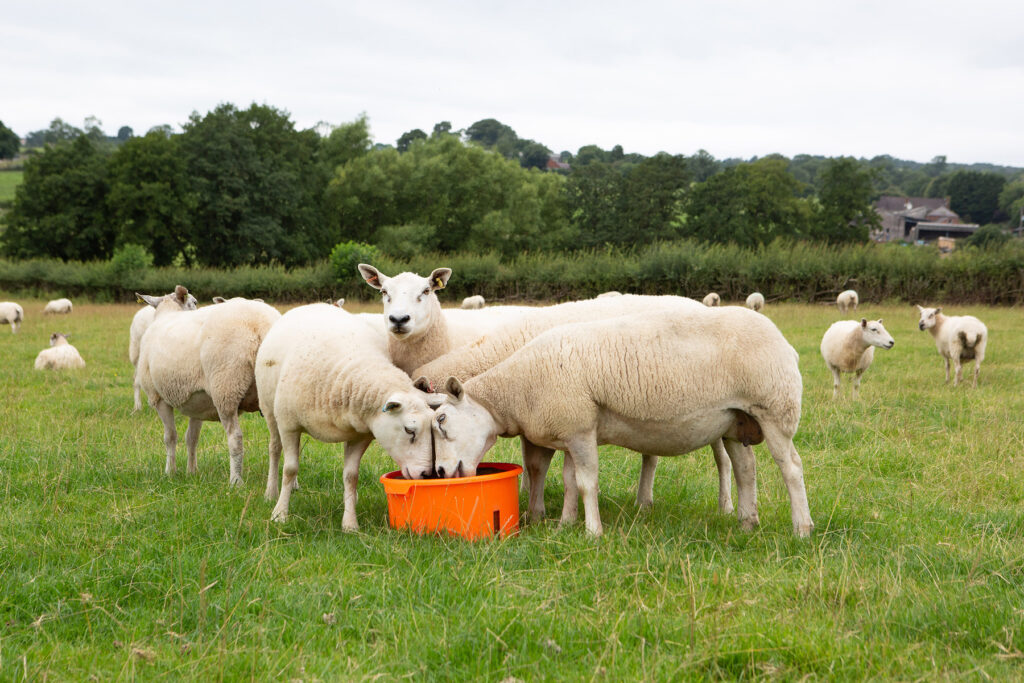Grass growth above average, but quality poor this year, expert warns
21st August 2023
As a recent survey highlights a 20% drop in scanning results last year, and industry data suggesting forage quality is low this year, Rumenco nutritionist Alison Bond highlights the importance of supplementation.
A Rumenco survey of scanners representing nearly 500,000 sheep across England, Scotland and Wales found last year’s scanning results to be back an average of 20%.
According to Dr Alison Bond, scanning percentage decline was a result of widespread drought hurting both grass quality and availability.
“The data found early lambers were impacted the most, with the decrease in scanning results being a result of more singles, not more barrens,” she says.
Concerns over forage quality
While this summer saw little rainfall and high temperatures impact early grass production, the damp and cool weather pattern stretched across mid to late summer has put livestock producers in a unique position – potentially one of false confidence, warns Dr Bond.
“When we look at industry data, grass growth is well above the four-year average from mid-July onwards. However, quality has largely been below the previous three-year average since the start of 2023,” explains Dr Bond. “While there is plenty of grass available going into the tupping season, it is essentially rumen fill with low nutritional value.”
Metabolisable energy and protein and sugar levels have been below average having never fully recovered from last year’s drought. In 2022, grass averaged 11.11 ME and 19.2% protein. In 2023, grass averaged 11.06 ME and 18.2% protein – hitting its lowest ME of 10.3 in early July and lowest protein of 14.1% in late June.
This is a concern, says Dr Bond, as it could have limited ewe body condition gain post-weaning. To gain one unit of BCS from weaning to tupping, ewes require grass to be at least 11 ME.
Grass sugar levels have also been significantly below average since last year, being nearly 50% lower in April and May. This will be limiting protein supply to ruminants, as the rumen microbes require sufficient fermentable energy in the form of starch and sugar to fully utilise the protein available in grass.
How to strategically supplement
Anecdotally, scanners whose customers supplemented sheep last year felt their scanning percentages benefited from the additional nutrition.
According to Dr Bond, the decline in forage quality paired with the upcoming seasonal decline in availability is going to make strategic supplementation essential this tupping season to both stretch forage stocks and meet ewe nutrient demands.
A high energy and protein feed block like Rumevite Sheep Super Energy Plus Fish Oil will fill nutrient gaps while also boosting lambing percentage by up to 22% when fed in the eight weeks around tupping.
“The supplement block formulation helps ewes reach optimal body condition ahead of tupping, supporting ovulation – which can lead to more ewes holding service in the first cycle,” says Dr Bond.
According to Dr Bond, Rumevite is a multipurpose product, also delivering daily requirements of minerals, vitamins and trace elements to boost livestock performance while supporting immunity, health and fertility.
The combination of little and often feeding and increased saliva production from licking the hard pressed feed blocks provides a flow of nutrients through the rumen to support a healthy rumen bug population. This supports forage digestibility, ensuring stock makes the most of the grass or forage that they do have.
“While there is plenty of grass available this year, farmers are going to have to provide additional supplementation to offset the low quality, and to fulfil ewe nutrient requirements for optimal scanning percentages,” concludes Dr Bond.
“Using a multi-purpose supplement like Rumevite Sheep Super Energy Plus Fish Oil will pay dividends by increasing forage utilisation, delivering essential nutrients to ewes and boosting fertility.”

